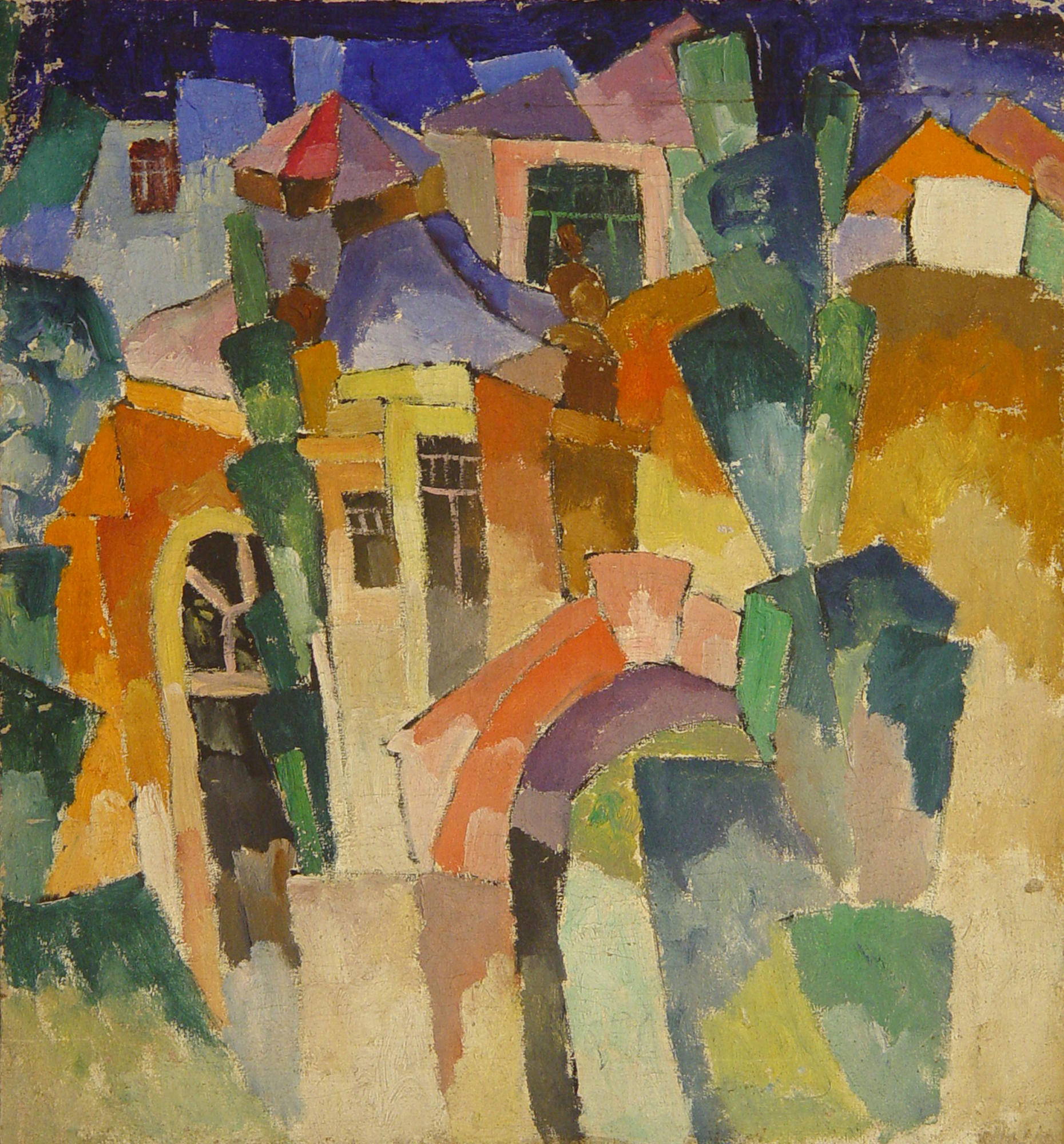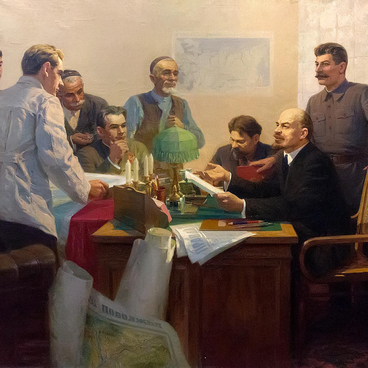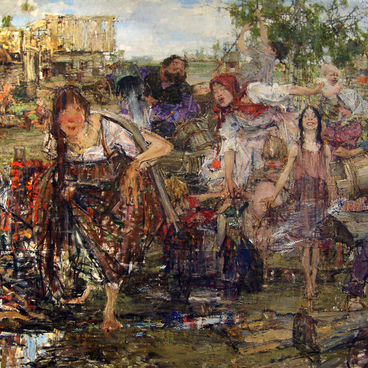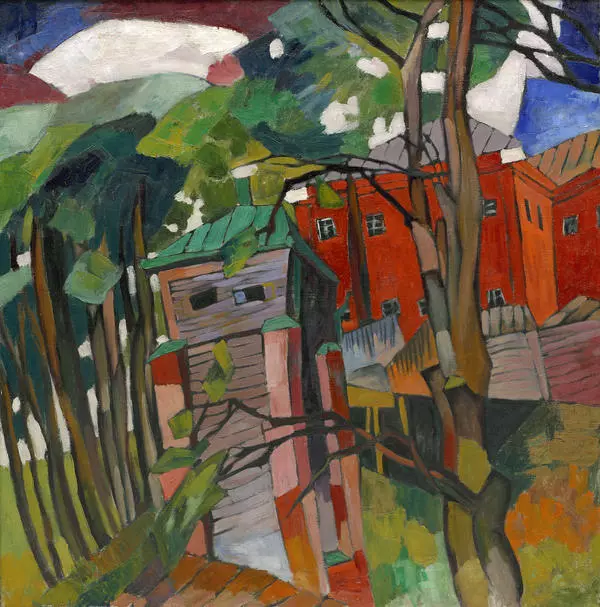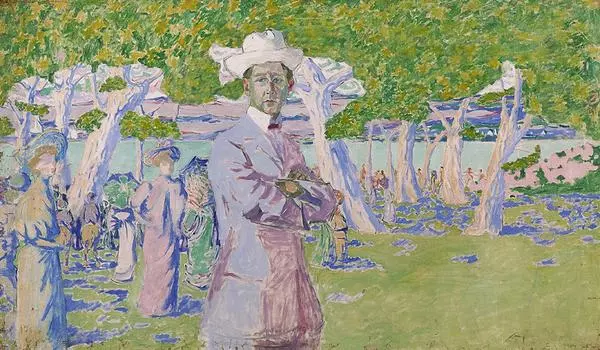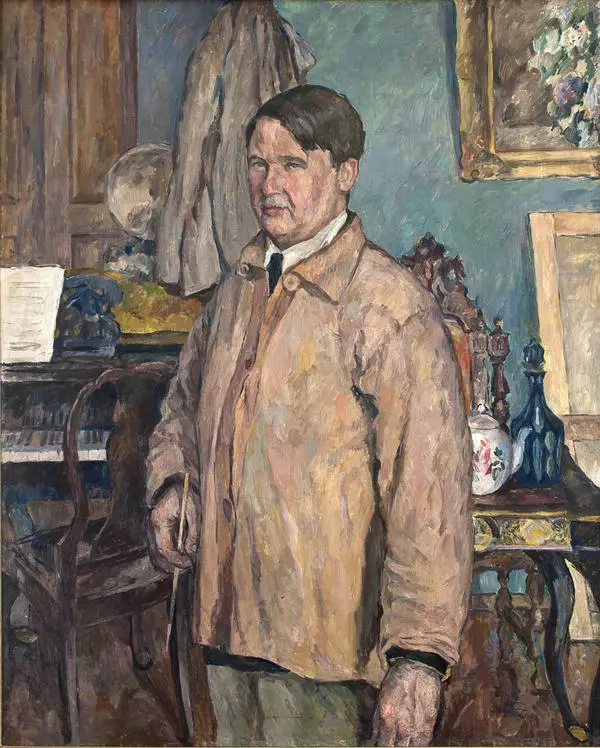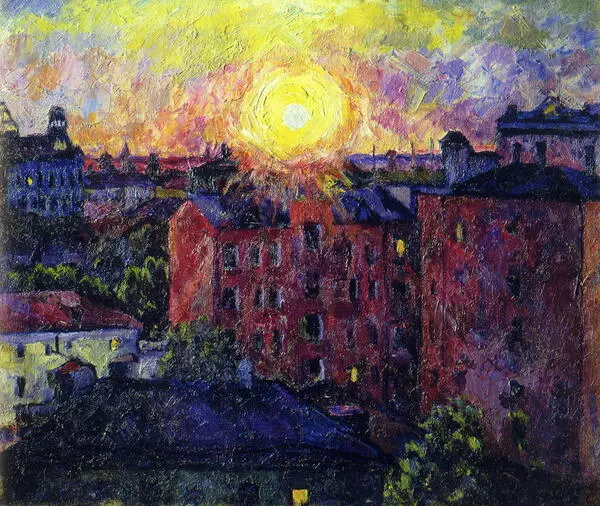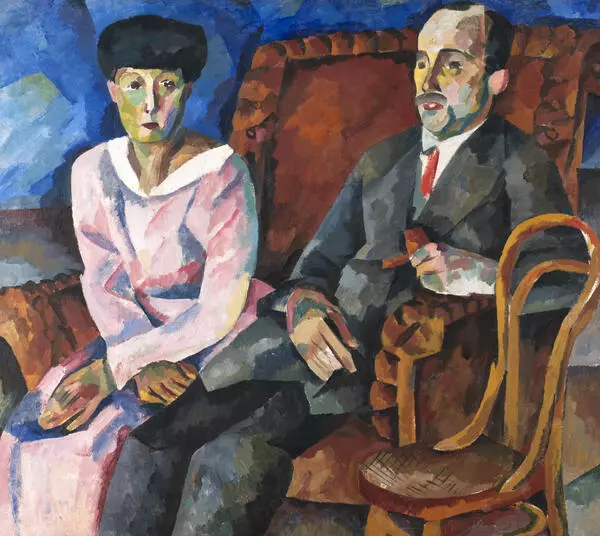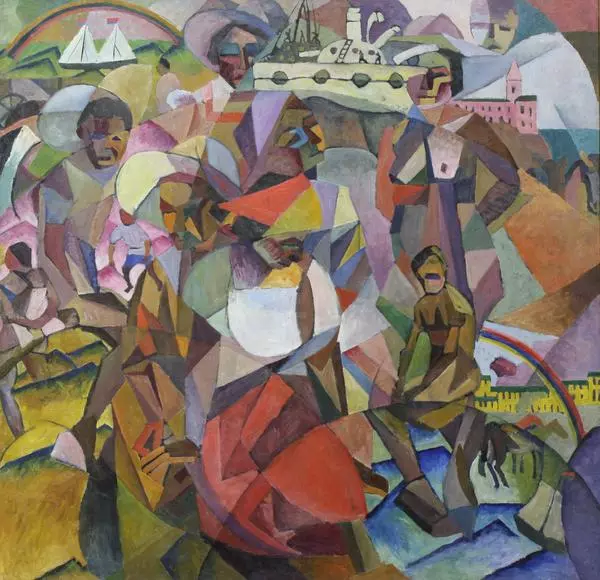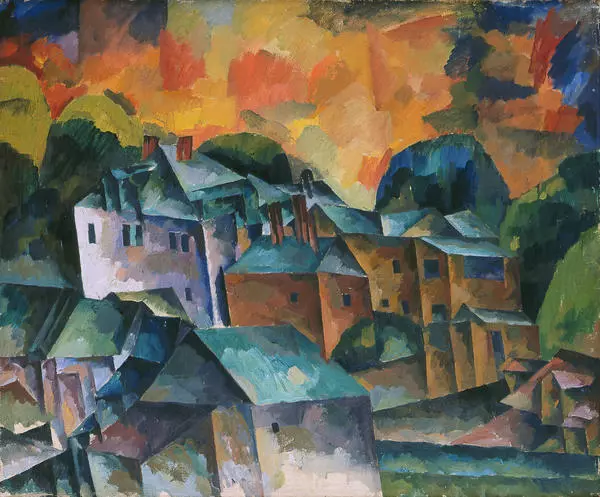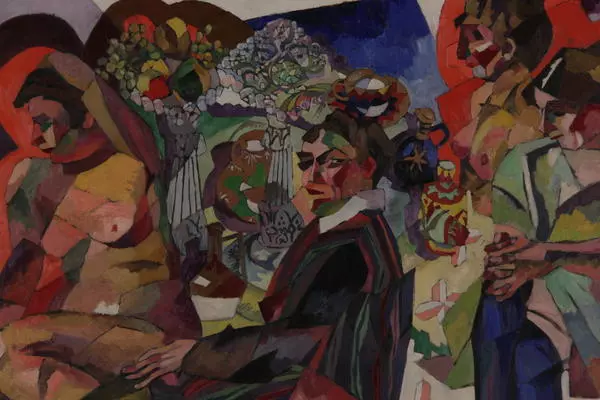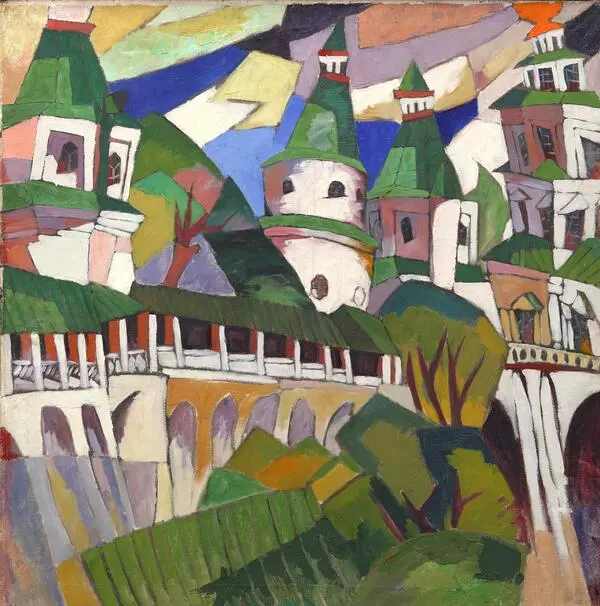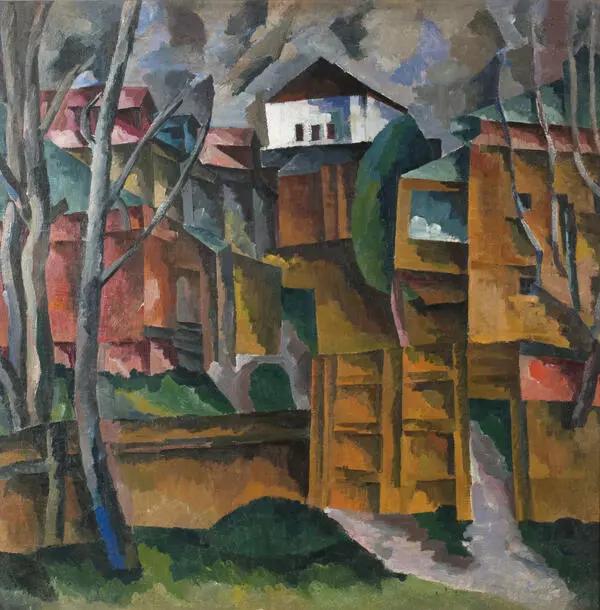Aristarkh Lentulov was one of the most audacious founders of the avant-garde art group Jack of Diamonds. He gave his own interpretation of Cubism, bringing in light and sound. Nicknamed ‘the painter of the sun’, he wrote: ‘My passion for the sun and bright light has been with me since I was born, so to speak’. To convey the sensation of bells, buzz and hum, Lentulov painted ‘wavy planes’ as he himself called them. In his experiments, Lentulov came closer than any of the ‘Jacks of Diamonds’ to the non-objectivity, though he remained within the sphere of figurativeness.
Like some ‘Jacks of Diamonds’ and many avant-gardists, Lentulov turned to ancient Russian themes in his art. Born in the family of a clergyman, he studied at the theological seminary and understood icon painting very well. He interpreted religious subjects, imitated icon covers, coated parts of canvas with bronze or silver paint.
In 1910, Lentulov moved to Paris, where he studied modern art, explored museum collections. He was fascinated by Cubists Derain, Léger and Le Fauconnier. He took lessons from Le Fauconnier at Académie de La Palette, which was a magnet for Russian avant-garde painters.
Like some ‘Jacks of Diamonds’ and many avant-gardists, Lentulov turned to ancient Russian themes in his art. Born in the family of a clergyman, he studied at the theological seminary and understood icon painting very well. He interpreted religious subjects, imitated icon covers, coated parts of canvas with bronze or silver paint.
In 1910, Lentulov moved to Paris, where he studied modern art, explored museum collections. He was fascinated by Cubists Derain, Léger and Le Fauconnier. He took lessons from Le Fauconnier at Académie de La Palette, which was a magnet for Russian avant-garde painters.
The Cityscape was probably created in the middle of the 1910s after the artist returned from Paris. The cityscape is fragmented into cubist volumes filled with light and motion. The painter gives up single point perspective and combines several angles at once. His architectural forms are symbolic, fractured and disjointed. The buildings are not placed on the ground but float in the air.The Cityscape was probably created in the middle of the 1910s after the artist returned from Paris. The cityscape is fragmented into cubist volumes filled with light and motion. The painter gives up single point perspective and combines several angles at once. His architectural forms are symbolic, fractured and disjointed. The buildings are not placed on the ground but float in the air.
